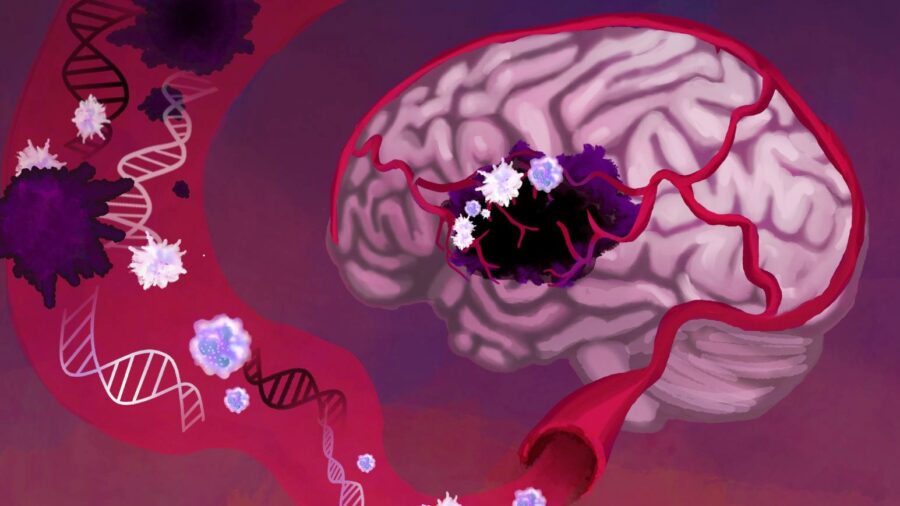A simple blood test may soon catch brain cancers months before symptoms appear, thanks to artificial intelligence that detects previously invisible tumor signals. Johns Hopkins researchers have developed a liquid biopsy technique that identifies brain cancers with unprecedented accuracy, potentially transforming how these deadly tumors are diagnosed.
Brain cancer detection has long frustrated physicians. Most patients receive diagnoses only after experiencing headaches, seizures or cognitive problems – often when tumors have already grown substantially. The brain’s protective blood barrier, essential for keeping pathogens out, has historically prevented cancer markers from showing up in blood tests.
“Our next-generation AI liquid biopsy approach combining DNA fragments and repeating genome patterns may accelerate brain cancer diagnosis,” says Victor E. Velculescu, M.D., Ph.D., co-director of cancer genetics and epigenetics at Johns Hopkins Kimmel Cancer Center and senior author of the study published April 29 in Cancer Discovery.
The breakthrough lies in the test’s dual approach. Rather than focusing solely on tumor DNA that might cross the blood-brain barrier, researchers created a machine learning system that identifies both circulating tumor DNA fragments and telltale immune system changes that occur throughout the body in response to brain cancer.
“We finally have a way of detecting brain cancer that takes advantage of its unique characteristics, including genome-wide fragmentation from brain cancer and immune cell changes,” explains lead study author Dimitrios Mathios, M.D., who completed the research during his fellowship at Johns Hopkins and is now at Washington University. “Some of the signals we detect come from the cancer itself in the brain, and some of them come from the immune system’s response to the cancer.”
This dual detection strategy proved remarkably effective. The researchers tested their approach on 505 patients from the United States and South Korea, successfully identifying brain cancers roughly 75% of the time – dramatically better than previous methods that detected fewer than 10% of cases. They then verified these results in a second group of about 95 patients from Poland.
For the millions experiencing headaches severe enough to seek medical attention each year, this test could provide critical early detection. The team ran computer simulations showing that if their liquid biopsy were used to screen just the estimated 10 million patients presenting with headaches at emergency rooms or primary care offices annually, nearly 1,700 more cancer cases would be detected than with current practices.
The technology builds on Velculescu’s previous work developing liquid biopsies for lung cancer – a technique now in clinical use for lung cancer screening. The brain cancer version employs more sophisticated AI to recognize patterns in both DNA fragments and repetitive genomic sequences associated with brain tumors.
Particularly interesting was the discovery that brain cancer patients show immune suppression throughout their bodies and have distinctive immune cell profiles in their blood that don’t need to cross the blood-brain barrier to be detected. This immune signature became a critical component of the test’s effectiveness.
The research, partially funded by the National Institutes of Health and private foundations, represents a potential paradigm shift in brain cancer diagnosis. Current protocols typically rely on physicians deciding whether symptoms warrant brain imaging – a subjective process that can delay diagnosis.
While promising, the technology still requires validation in larger prospective trials, which the team is now planning. They’ll focus particularly on populations at elevated risk for brain cancer.
Multiple organizations contributed to this research, including Johns Hopkins, Washington University in St. Louis, the Medical University of Lodz in Poland, and Stanford University. Several researchers disclosed financial interests in DELFI Diagnostics, which has licensed some of the underlying technology.
If successful in larger trials, this blood test could eventually become part of routine screening for people with persistent headaches or those at higher risk for brain tumors, potentially saving thousands of lives through earlier intervention when treatments are most effective.
Discover more from NeuroEdge
Subscribe to get the latest posts sent to your email.

